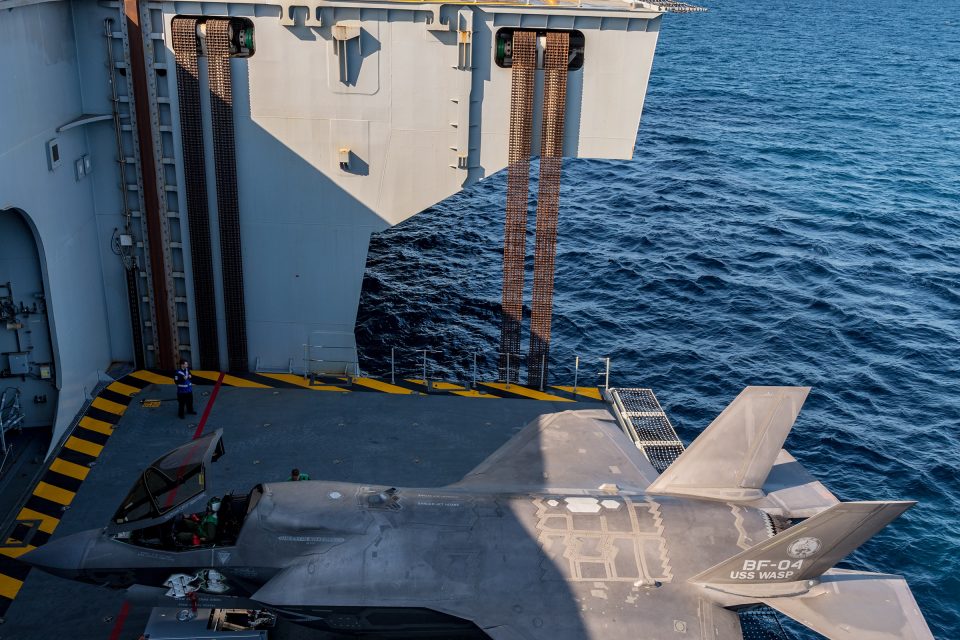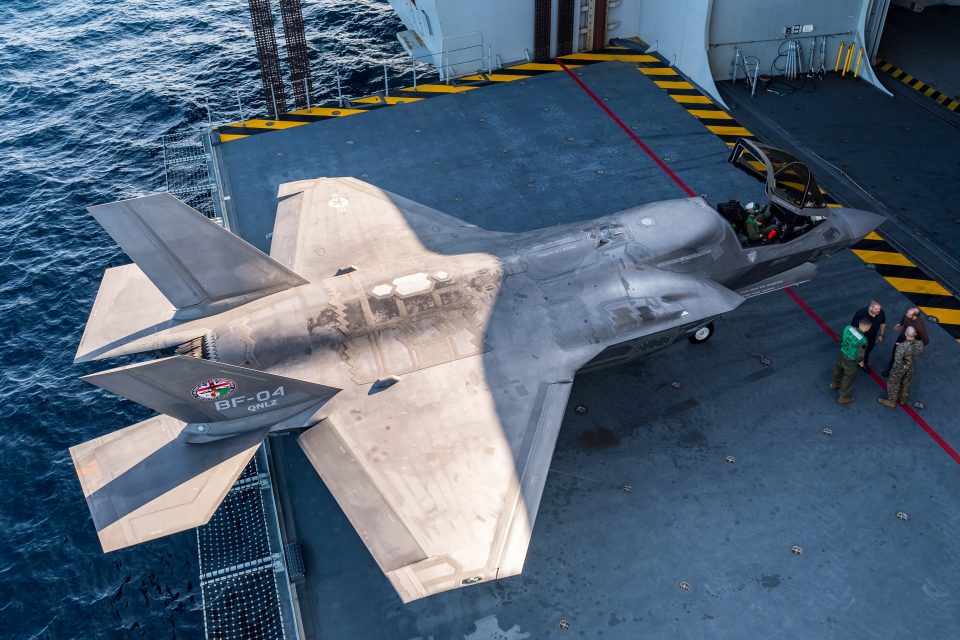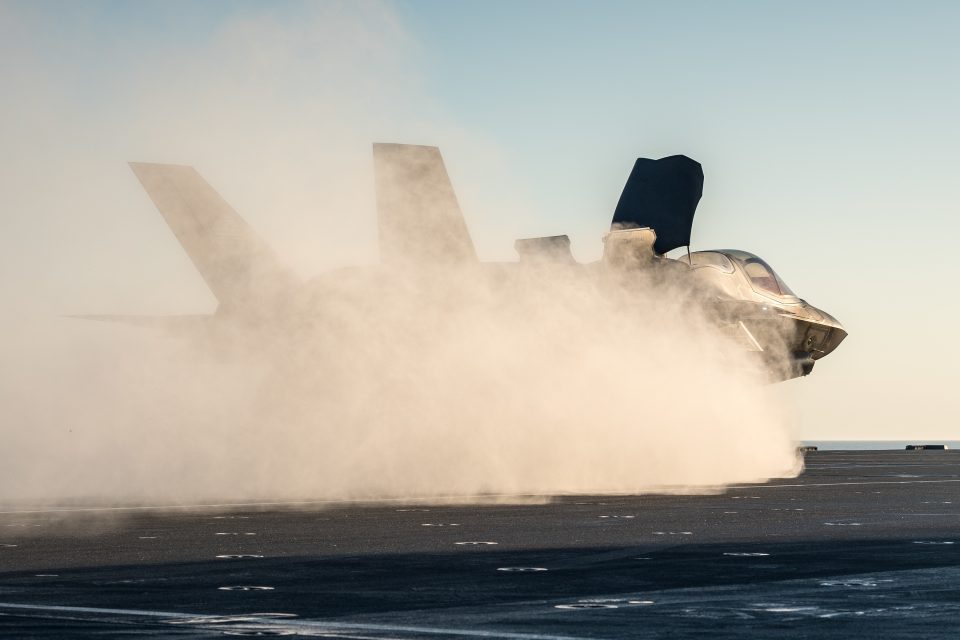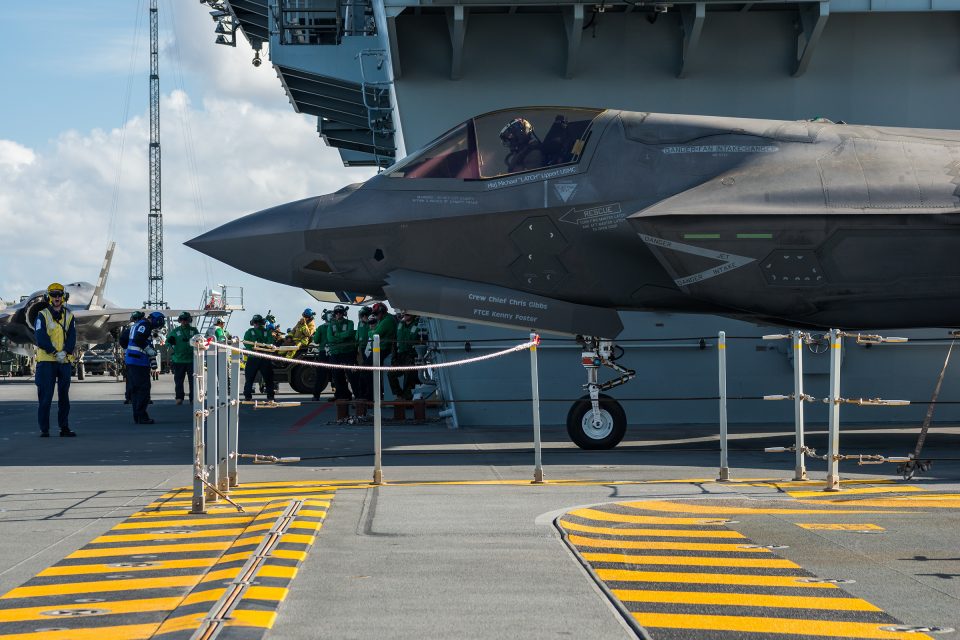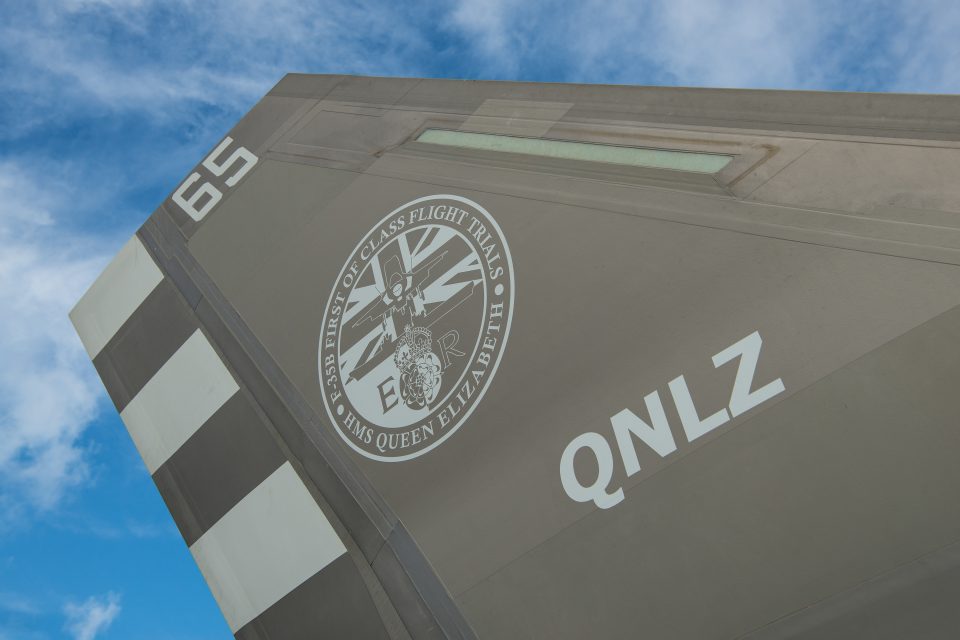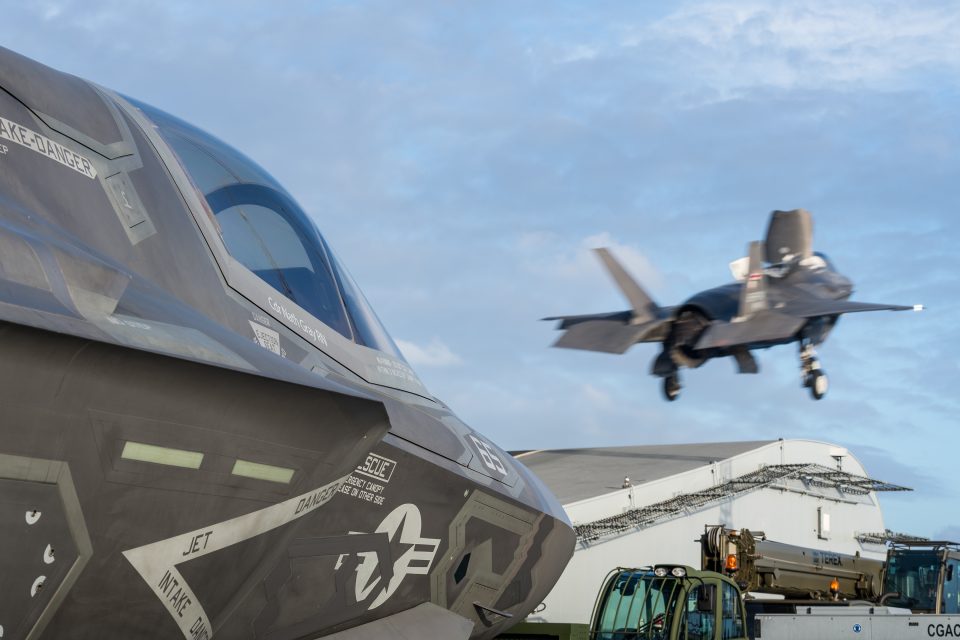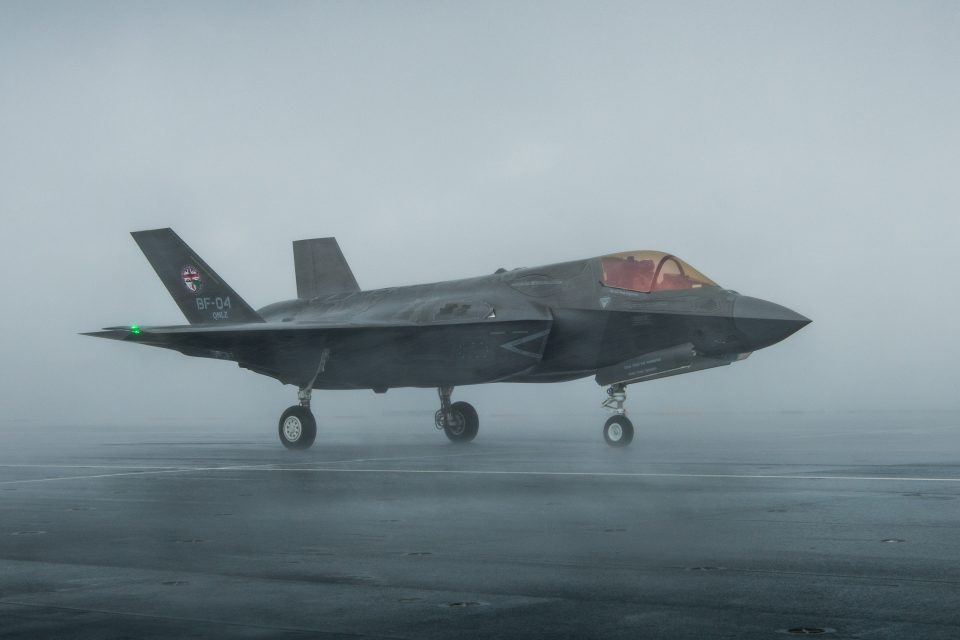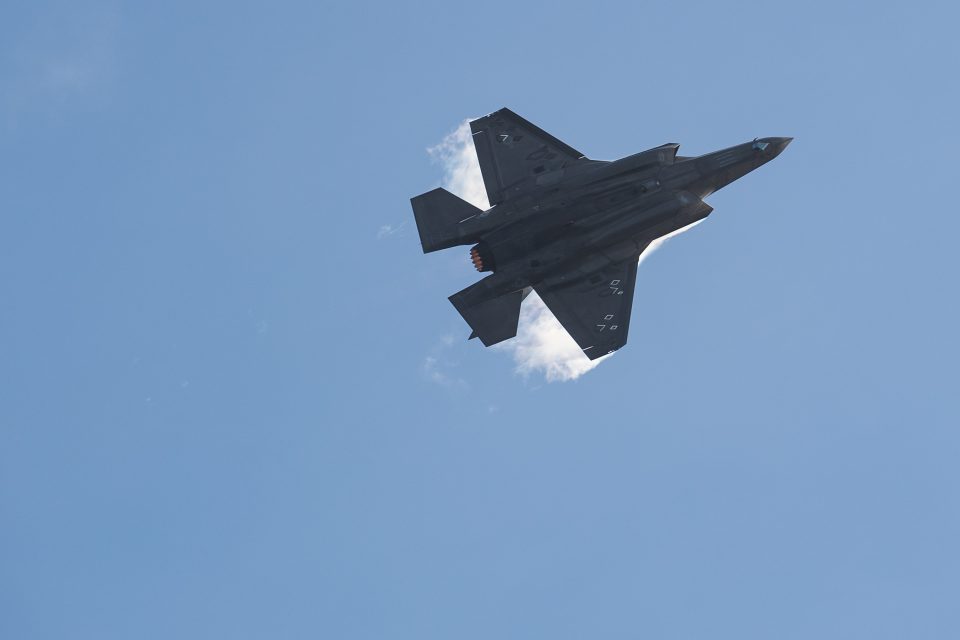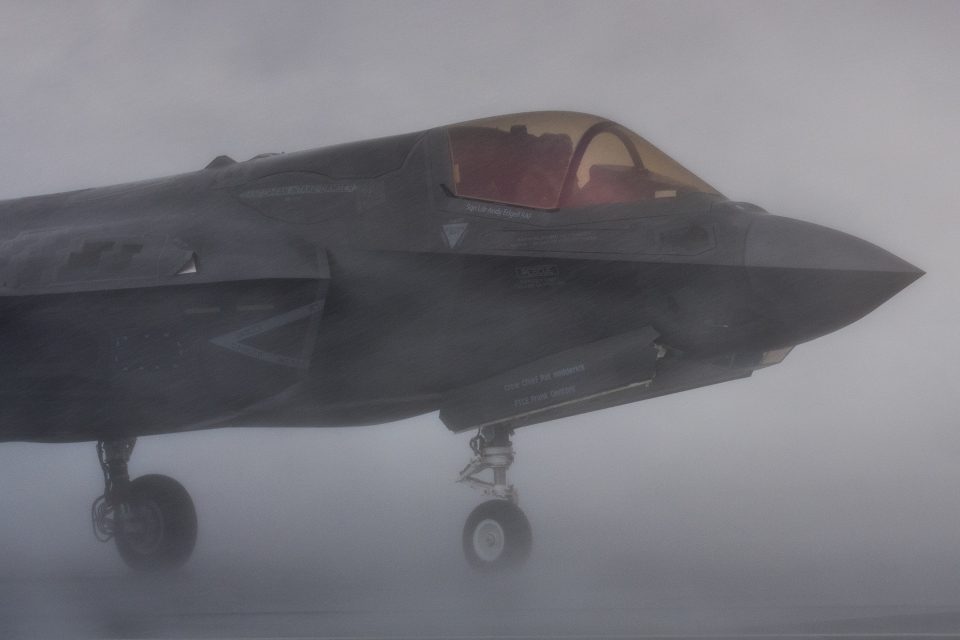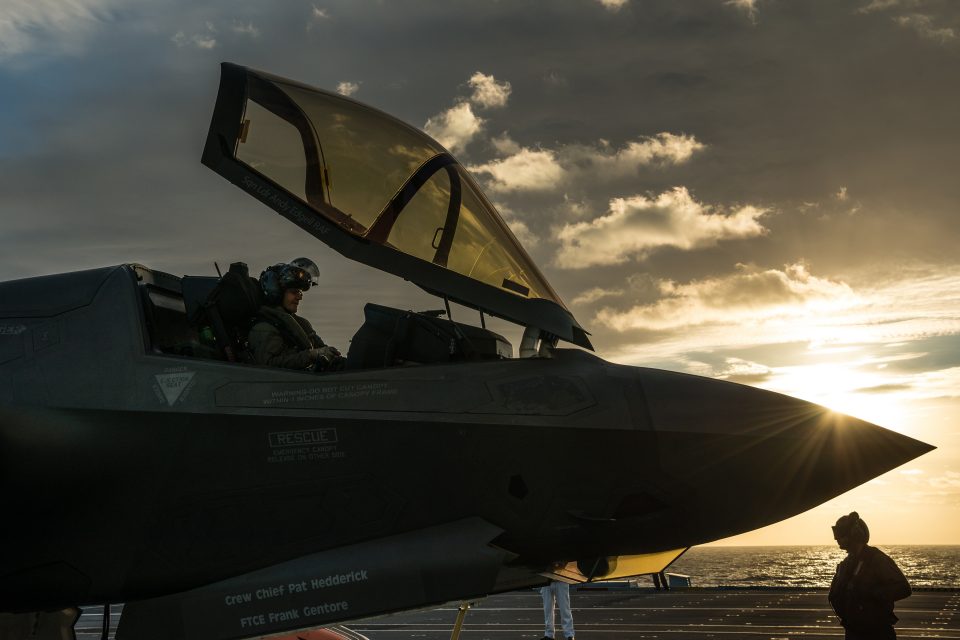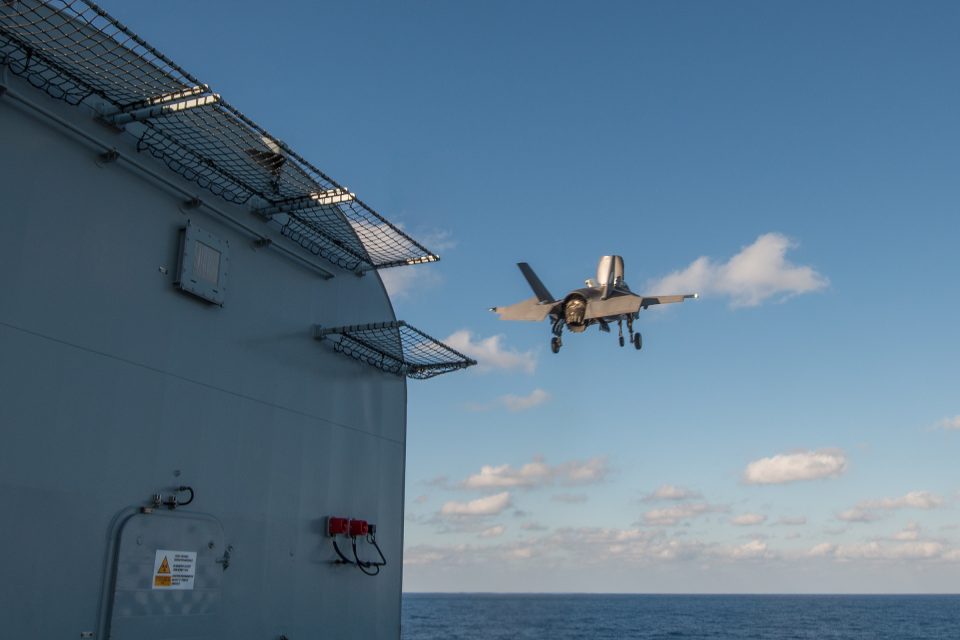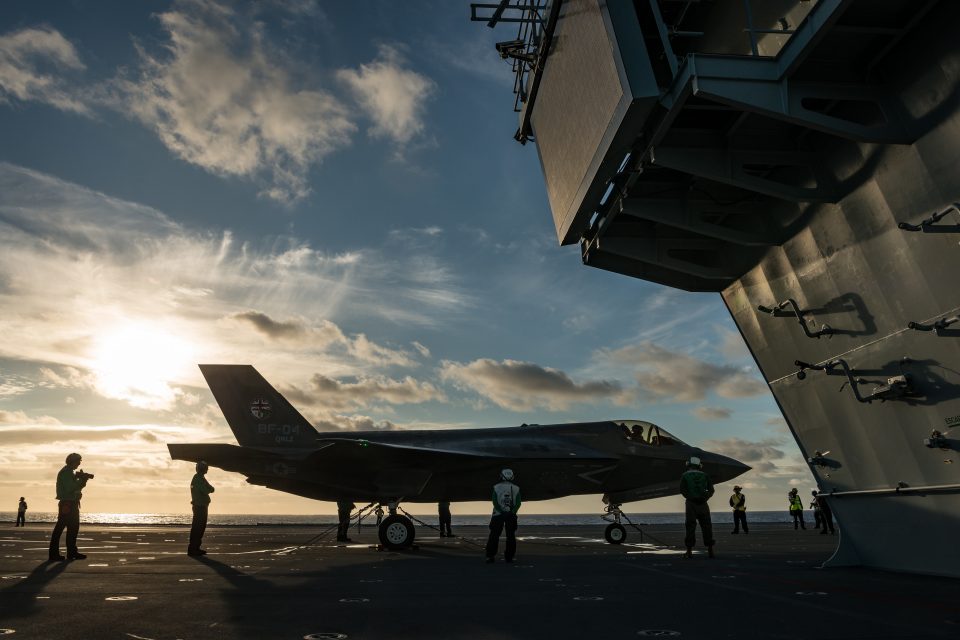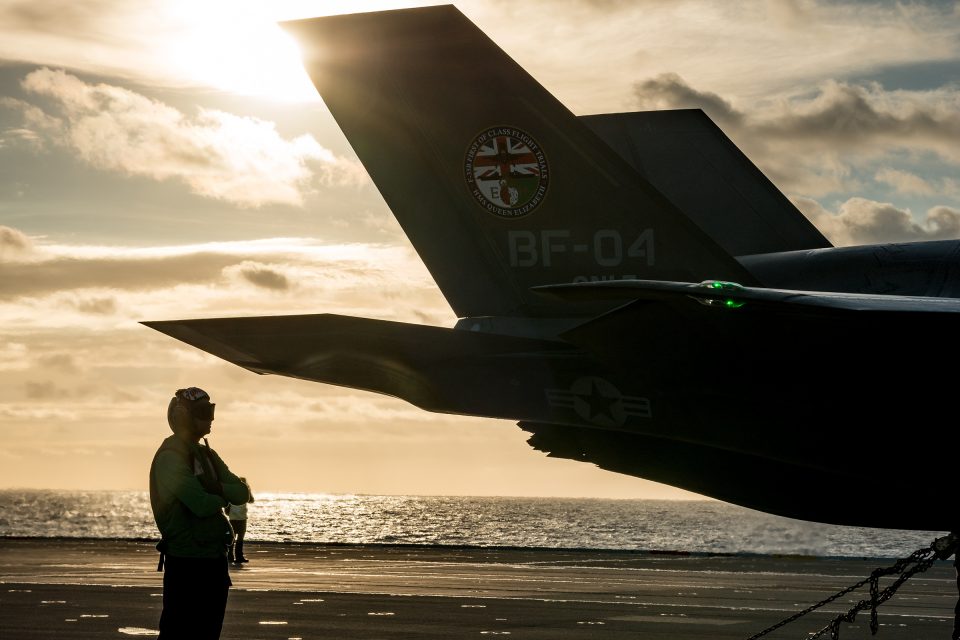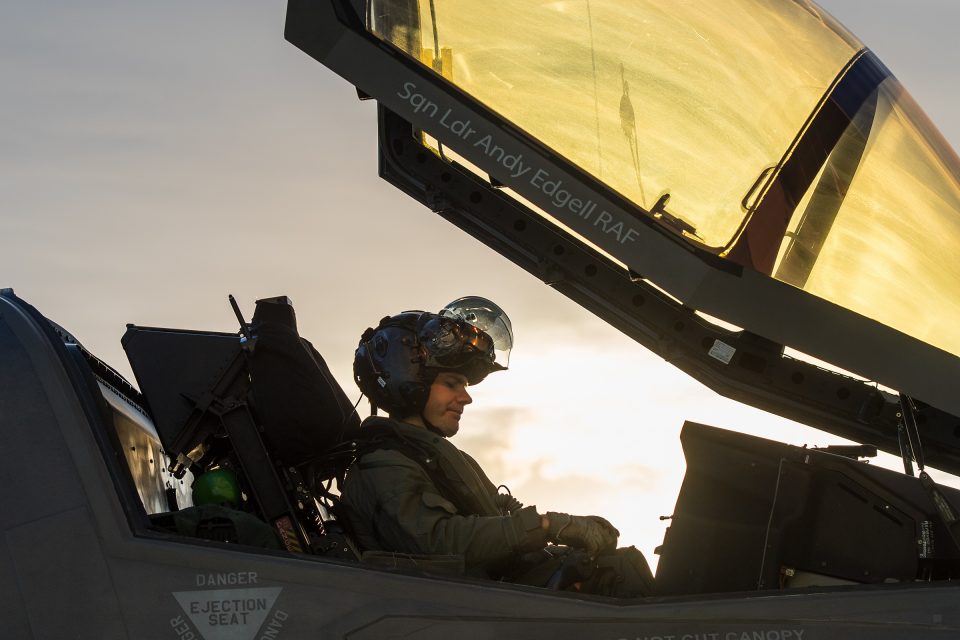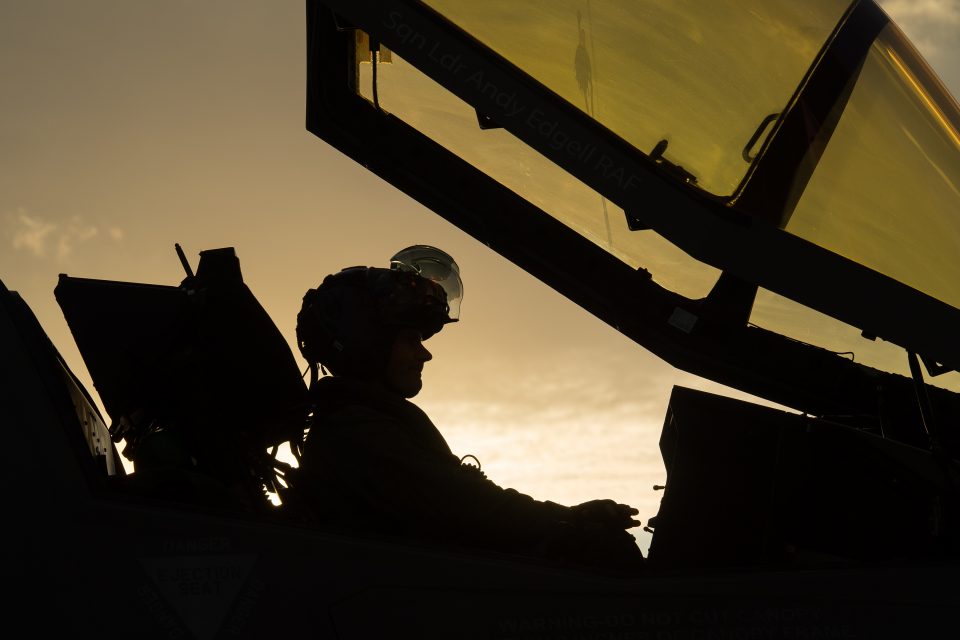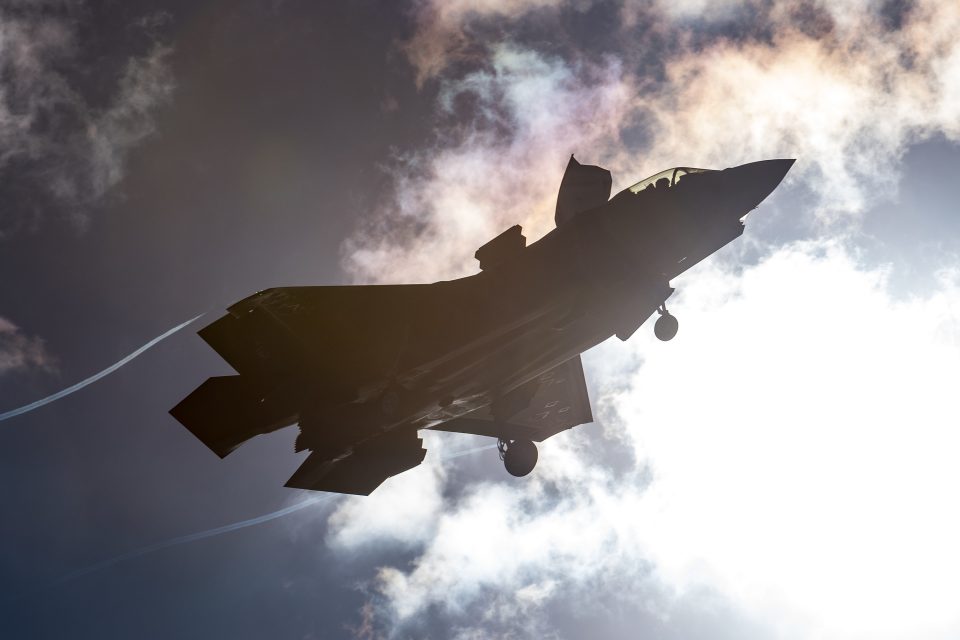Second Line of Defense has followed the UK thinking, construction, and initial trials and preparation for operations by the new UK carrier, the HMS Queen Elizabeth throughout its life to date.
The carrier will have a major impact on UK defense and how the forces will evolve over the next decade.
It is a major shift not just the acquisition of a new platform.
The new carrier is itself a trigger or magnet to a UK force transformation process.
In the recent update published this year by the UK government of its earlier 2015 defense review, the carrier was highlighted a centerpiece of joint force transformation.
“The Joint Force that we are building will need to be versatile and agile. It will need to be effective in the full range of environments and across all five domains – land, sea, air, space and cyber.
“It will be international by design, routinely exercising and operating with allies and partners.
“It will be credible and capable of addressing state and non-state threats both alongside other nations and on our own.”
“Notably, the report then identified the major elements of defense modernization designed for Joint Force 2025 to meet these criteria and with little surprise the first one identified was as follows:
“A maritime task group centered on a Queen Elizabeth Class aircraft carrier with F-35 Lightning combat aircraft.”
Most of the analysis of the new carrier really focuses on the platform and what is necessary to get that platform operational but that is far too narrow an approach.
The carrier is a centerpiece, trigger or magnet for broader UK defense transformation within a unique historical context, namely, the broader strategic shift to dealing with higher end operations and the coming of Brexit.
From a force structure transformation piece, the focus on the carrier can be approached in several ways.
The first way is to look at the workups and training associated with getting the carrier ready for its 2021 maiden deployment.
This is a significant challenge and the focus of attention of the Royal Navy and its industrial partners and a major element of my discussions while at Portsmouth.
From this point of view, the integration of the aircraft to fly on the carrier is a major challenge as well, and includes three new aircraft, the F-35, Commando Merlin, and the Crow’s Nest.
The second way is to look at the impact of the new carrier on the Royal Navy as it shifts from a single ship deployment focus to reshaping the Navy as a maritime task force navy.
And given how different the new UK carrier is from the US large deck carriers, this maritime task force will draw upon US experience but shape a new approach as well.
The shift to a maritime task force requires other changes as well with new shapes and capabilities coming to the fleet, new aircraft, new missiles and ultimately directed energy as well to the force.
The third way to look at the carrier is how the coming of the F-35 to the RAF and Royal Navy will intersect with the global partners also flying the aircraft, and notably the partners within Europe.
With the UK flying the same aircraft as the Northern Europeans, including the Dutch, this shapes new opportunities and capabilities as well.
And the close working relationship with the US Navy and Marine Corps will be evident as the HMS Queen Elizabeth comes this summer for F-35 integration training off of the Virginia Coast and when the Marines operate off of the ship, including next year during further ship trials off of the British coast as well.
The fourth way to look at the carrier is the impact of distributed decision-making, distributed operations and mobile basing upon the concepts of operations which the carrier will enable and participate in.
Put in another way, the concepts of operations being shaped 21stcentury combat forces are in transformation, a transformation which is built around distributed capabilities, distributed C2 and flexible or agile basing.
The new carrier both supports and interacts with all of these trends.
How will the carrier both contribute to and learn from these broader macro allied military transformation dynamics?
The fifth way to look at the coming of the carrier is to examine its intersection with and contribution to the transformation of airpower more generally.
The F-35 is a multi-domain flying combat system, rather than being a legacy multi-mission aircraft.
This provides an opportunity to both leverage and reshape multi-domain capabilities, as other aircraft are modernized or new assets added to the air combat force.
Clearly, the modernization of Typhoon is being done in close alignment with the coming of the F-35 and provides a significant plus up of the overall air combat force.
The coming of the P-8 to RAF Lossiemouth will provide as well a maritime domain awareness strike aircraft, which will provide a significant capability, which will be part of the operational envelope of the new maritime task force navy being forged around carrier.
In short, one can take a picture of the carrier.
But what one is not seeing is the tissue of relationships being reshaped by what you see in that picture.
It is a multi-domain warfare asset, which can only be understood as a driver for change within an overall UK defense transformation process and the new strategic setting.
An update on HMS Queen Elizabeth initial testing with the F-35 was provided in an article by Jeff Newman, Naval Air Systems Command Public Affairs published on October 19, 2018.
NAVAL AIR STATION PATUXENT RIVER, Md. (NNS)
On Oct. 16, British sailors and members of the F-35 Integrated Test Force (ITF) at Naval Air Station (NAS) Patuxent River, Maryland, completed a successful opening phase of the First of Class Flight Trials (FOCFT) being conducted this fall aboard the United Kingdom’s new aircraft carrier, HMS Queen Elizabeth, near the U.S. eastern seaboard.
The first of three such phases to be held on the ship, the developmental testing (DT-1), aimed to generate enough flight test data to certify the F-35B Lightning II as ready for future operational testing aboard the ship.
The two F-35Bs involved were vertically landed aboard HMS Queen Elizabeth for the first time Sept. 25, piloted by Royal Navy Commander Nathan Gray and Royal Air Force Squadron Leader Andy Edgell, both test pilots with the Pax River ITF. By Oct. 8, the ITF had collected enough data to support operational test.
“It has been a superb effort by everyone across the ITF and HMS Queen Elizabeth so far in the UK’s F-35B sea trials,” said Royal Navy Capt. Jerry Kyd, the ship’s commanding officer. “I could not be more pleased with the team spirit and dynamism from all that has delivered a volume of quality data which has put us well ahead of where we expected to be at this stage. I am very grateful to all the ITF folk who have been focused, professional and willing to go the extra mile – more to come!”
First Landings of F-35B onboard HMS Queen Elizabeth from SldInfo.com on Vimeo.
Within days of the first landing, Gray, Edgell and two other ITF test pilots on the First of Class Flight Trials (Fixed Wing) – Marine Corps Maj. Michael Lippert and Peter Wilson – qualified for daytime flight operations aboard the carrier. Nighttime flight operations began the next day, and Edgell and Wilson soon became qualified for nighttime operations.
On Oct. 2, with winds over the deck exceeding 40 knots, the test team worked on wind envelope expansion conducting short takeoffs from the carrier’s ski jump along with vertical landings on the deck, which comprises a tower for the bridge and a second tower for FLYCO (flight control). The team conducted the same maneuvers nine days later, but with winds on deck above 50 knots.
The first-ever shipborne rolling vertical landing (SRVL) of an F-35B came Oct. 13, a movement the UK plans to use that allows the jets to land onboard with heavier loads, meaning they won’t need to jettison fuel or weapons before landing. Vertical landings on the ship were made by the jet coming to a hover to the side of the ship, translating sideways over the deck, and then lowering to land. The SRVL uses a more conventional landing pattern by approaching the ship from the aft end at speed and then using the thrust from the nozzle and lift created by air over the wings to touch down and come to a stop as soon as possible.
Three days after the first SRVL was made, DT-1 testing wrapped up and the aircraft returned to NAS Patuxent River. In all, across 38 total flights, the team conducted 98 short-takeoffs from the ski jump, 96 vertical landings and two SRVLs.
“It is humbling to be involved in setting the foundation operating envelopes that the Lightning will use to operate from the UK carriers for the next 40-plus years,” said Royal Navy Commander Stephen Crockatt, team leader of UK personnel embedded within the ITF at both Pax River and Edwards Air Force Base, California. “With this combination, the UK will have a formidable capability with true global reach.”
The test team – comprising nearly 175 ITF members aboard the ship – completed several needed parameters during DT-1, including day and night short-takeoffs and vertical landings with minimal deck motion, in varying wind conditions and with and without internal stores.
“I’m very proud of the test accomplishments by the combined team of the 1,500 personnel comprised of the ITF, the carrier strike group and the crew of HMS Queen Elizabeth with her embarked 820 and 845 squadrons,” said Andrew Maack, the F-35 Pax River ITF’s chief test engineer. “It was impressive to see the excellent teamwork at all levels of the organizations.”
Crockatt agreed.
“It was great to see the ship and the ITF working in harmony to efficiently get the best data possible,” he said. “Watching the HMS Queen Elizabeth and the Lightning come together as a single capability has been remarkable.”
Beyond the completed DT-1 test requirements, which were performed within the same flight envelope as will be used in the first operational test phase, the ITF also conducted about half of the testing that falls under the DT-2 threshold, or the flight envelope needed to reach initial operational capability (maritime).
The ITF returns to the ship in late October for DT-2, which will concentrate on external stores testing, minimum performance short-takeoffs and SRVLs, and night operations.
A third developmental test for First of Class Flight Trials (Fixed Wing), followed by operational testing, is scheduled for 2019. Together, the tests will help the U.K. Ministry of Defence reach F-35B IOC(M) in 2020.



